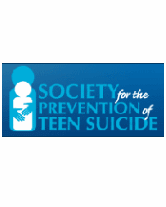The answer is FALSE. While this is certainly not true, one of the issues that educators often face is the presence of kids in their classrooms who have been recently hospitalized for suicide attempts or are currently undergoing mental health treatment for suicidal ideation. And, yes, these kids may still have thoughts of suicide. So the question is, how should they be handled in the classroom?
First, an educator needs the kind of information about suicide that is being covered in the Making Educators Partners in Suicide Prevention training to make the topic less intimidating. If you're afraid or overwhelmed by even the thought of suicide, you'll convey this discomfort to your students. Secondly, ask your school's resource staff for suggestions on how to best provide classroom support to this student. Lastly, remember that there may always be students in your classes who are either struggling with thoughts of suicide or have been personally touched by suicide in some other way. Be sensitive to the topic, and if it comes up in curriculum or classroom discussions, treat it respectfully. Avoid clichés like: "Suicide is a permanent solution to a temporary problem." Clichés often compromise our ability to see the bigger picture because they are dismissive and simplistic. And, suicide is never simplistic.
Once a person has been suicidal, he or she will always have a ?predisposing vulnerability.' This means that because a person considered suicide at one time in his life, he might consider it again. We must remember, though, that once people have been identified as suicidal, the next step is to refer them for mental health treatment that teaches them healthier coping techniques. When we think about suicide as a solution to a problem that can't be solved by any other means, we realize how important it is to increase a student's repertoire of healthy problem solving alternatives. That way suicide isn't used as a coping technique with future problems.
The good news is that with appropriate treatment, suicidal impulses and thoughts can abate and change. But it's important to underscore that the treatment must be 'appropriate.' There needs to be both an assessment and follow-up by a mental health professional trained to deal with suicidal youth. If medication is needed, it should be prescribed by a psychiatrist and be part of a treatment protocol that includes 'talk therapy' or counseling. When these guidelines for clinical intervention are followed, there's a really good chance that suicidal feelings and thoughts will diminish. Students will also learn effective coping strategies to manage suicidal feelings, should they return.













